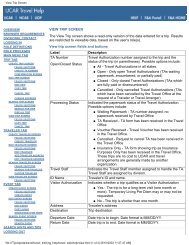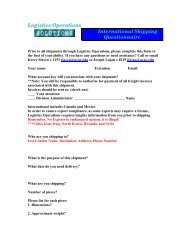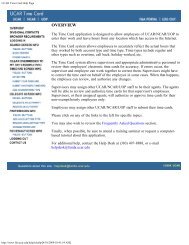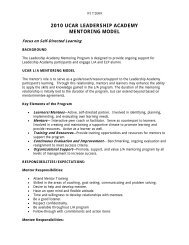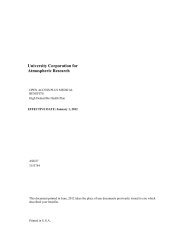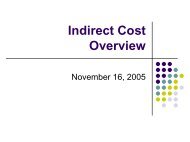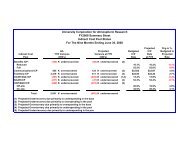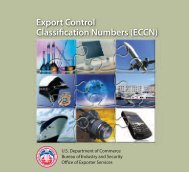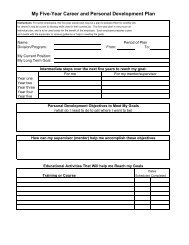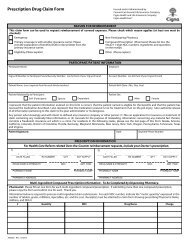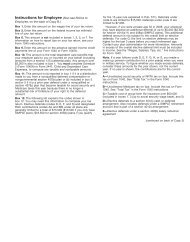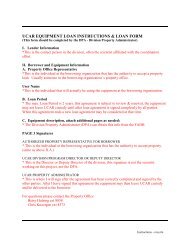Towards a Metrics Implementation Plan - UCAR Finance ...
Towards a Metrics Implementation Plan - UCAR Finance ...
Towards a Metrics Implementation Plan - UCAR Finance ...
Create successful ePaper yourself
Turn your PDF publications into a flip-book with our unique Google optimized e-Paper software.
Strong leadership in <strong>UCAR</strong> management and consequently in the organization’s strategic planspartially fulfills the requirements of the Process <strong>Metrics</strong>. Additional Process <strong>Metrics</strong> for settingpriorities and allocating resources among elements of the program need to be created.It is interesting to note that the proposed <strong>UCAR</strong> metrics are dominated by Output <strong>Metrics</strong>, whichmeasure products and services.Input metrics, which measure tangible quantities needed to achieve a goal, are not considered inthe current list. Input metrics include resources to implement and sustain research, humancapital, measurement systems, prediction models, data services, and infrastructure. This may bean inherent weakness in the <strong>UCAR</strong> <strong>Metrics</strong> Committee Report because results of output metrics(good, bad, or ugly) cannot be explained if there is no way of knowing that enough resourceswere spent on achieving a desired goal. As a result, this lack of input metrics may limit theability to explain output metrics.We can see, then, that the current list of <strong>UCAR</strong> metrics needs to be augmented to fill the gaps inProcess and Input metrics.4 Outline of <strong>Metrics</strong> <strong>Implementation</strong> <strong>Plan</strong> Process for <strong>UCAR</strong>4.1 Process IntroductionIn this section, we outline a potential process for <strong>UCAR</strong> to follow in developing an MIP. Wedeveloped this process based on our experience with and knowledge of <strong>UCAR</strong>/NCAR/UOP andour vision of what the MIP should include at the end of the process. We offer this as a foundationon which to build a final MIP development process that can be altered, supplemented, andrevised as needed based on the organization’s objectives and goals and the resources available.We are as explicit as possible in stating the assumptions and decisions that need to be made indeveloping such a process.The NRC document 3 states that “A good strategic plan must precede the development ofmetrics.” Our process assumes the <strong>UCAR</strong> Strategic <strong>Plan</strong>, currently under development, as itsfoundation. Integration with the completion and adoption of the <strong>UCAR</strong> Strategic <strong>Plan</strong> is aprerequisite for final deployment of the MIP.In suggesting this process we view thus the MIP as an integral component of overall <strong>UCAR</strong>strategic planning and <strong>UCAR</strong>/NCAR/UOP management focus. We feel that these metrics willbecome a crucial tool in management, program evaluation, and budget decision making, as wellas in institutional culture.As we developed this process, we assumed a “top-down” approach. By this we mean that <strong>UCAR</strong>management will strongly support this effort, adopt an MIP development process, and entrainother units (NCAR, UOP) into this commitment. If this effort were to involve only developmentof metrics for <strong>UCAR</strong>, the approach and effort would likely be significantly different thansuggested here. We also suspect that, if NCAR and UOP are not fully on board with this effort,the exercise will fail to meet stakeholder requirements (e.g., NSF’s desire to see metricsindicative of the return on its investment).3 Executive Summary, p. 37




